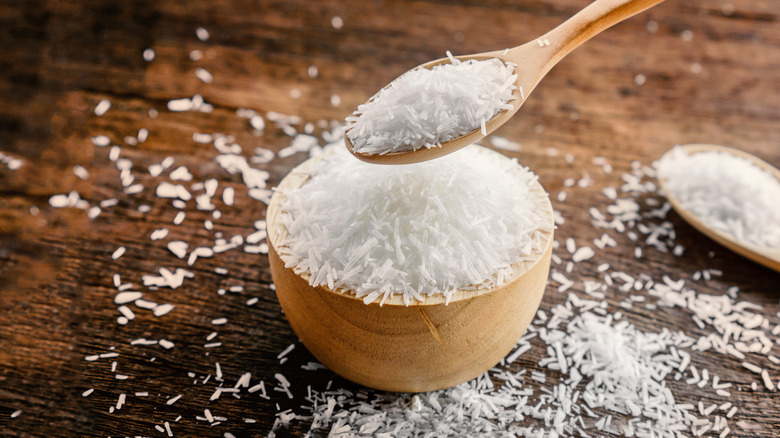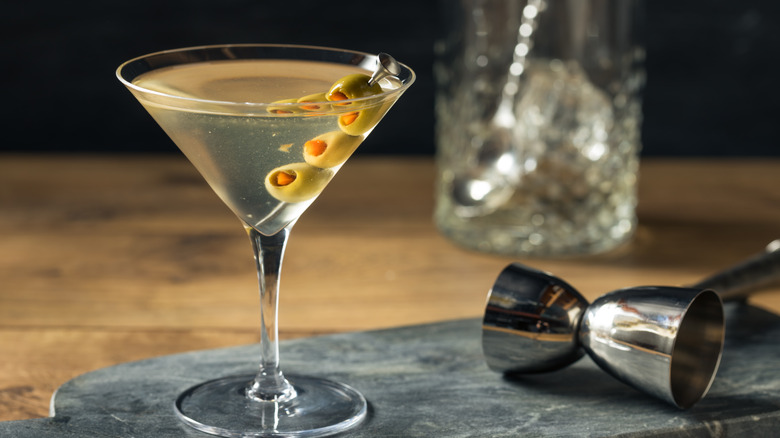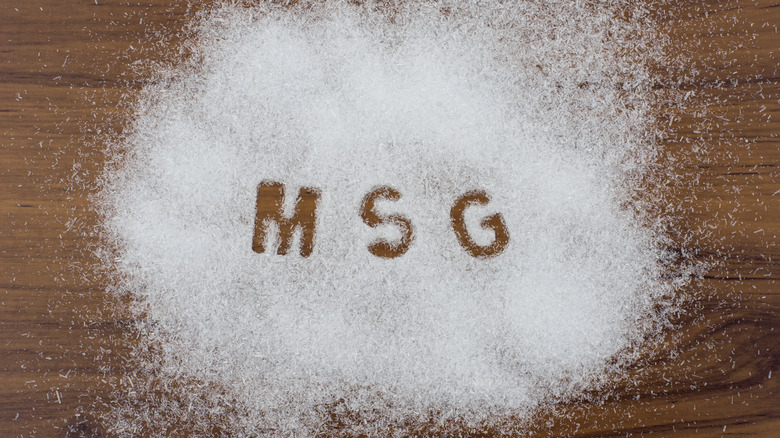Need A Savory Ingredient To Spice Up Cocktails? Try MSG
MSG probably isn't the first ingredient that springs to mind for spicing up cocktails. However, this might stem partly from many Americans' lack of understanding about what MSG is, influenced by myths rooted in racism and harmful misconceptions.
MSG, or monosodium glutamate, is a natural salt and a unique seasoning that delivers umami flavor. Umami, one of the five basic tastes, is the key to MSG's effectiveness as a cocktail ingredient. Besides imparting a distinctively savory depth to drinks, MSG also enhances balance and texture in beverages. The MSG Martini, a variation of the dirty martini invented at the Brooklyn-based restaurant Bonnie's, is perhaps the most famous example, featuring a signature MSG-infused olive brine.
Of course, using MSG as an ingredient should be done judiciously, and in combination with other elements. Water is the most common addition to any mix (typically at a two-to-one ratio in favor of water), with a dash of MSG stirred in à la bitters, or added via a water dropper. While not necessarily recommended for every cocktail, MSG is a versatile flavor enhancer that, when it works — as it does in a growing number of new drink recipes — makes it difficult to stop after just one.
Cocktail recipes that showcase MSG
Balance has always been a crucial concept in cocktail recipes. The so-called golden ratio for bartenders was devised to harmonize sweet and sour flavors with the base liquors. Nowadays, incorporating savory flavors is often an integral part of this equation. Note, for example, the current trend for meat-flavored cocktails.
MSG's savory flavors tend to meld well with base liquors like gin and bourbon, though no liquor is deemed incompatible with this ingredient. Notably, gin and MSG combine in the MSG Martini, and in the Master Bandit, a gimlet variation introduced by Cote, a Korean steakhouse in New York City. However, MSG also pairs effectively with tequila, enhancing the umami in the fruity best life cocktail with guava and grapefruit, and in the vegetal, bell pepper, and parsley-infused margarita verde.
For those looking to incorporate MSG into their home cocktail-making, the ingredient typically shines in complex concoctions or as a means to impart savory sophistication to simpler beverages. Martinis, margaritas, gimlets, and bloody marys, for instance, all welcome the addition of savory elements.
How the MSG stigma is being erased
Don't call it a comeback; MSG has been here for years. It made its debut in the early 1900s when its umami flavors were discovered, patented, and later mass-produced by Japanese professor Kikunae Ikeda. However, the ingredient faced decades of stigmatization due to its association with the discriminatory — and unfounded — label, "Chinese Restaurant Syndrome." This prejudiced medical term originated from a 1960s letter to The New England Journal of Medicine, which erroneously attributed symptoms like dizziness and headaches to Chinese food. Later investigations debunked the letter's claims, and no medical issues linked to MSG have ever been substantiated.
The growing use of monosodium glutamate in cocktails indicates that any former stigma attached to MSG is diminishing. The ingredient is naturally present in a variety of tasty foods, from tomatoes to cheeses, making it a viable option for spicing up the occasional adult beverage. This trend is increasingly evident in bars and restaurants, often yielding remarkable outcomes. However, a trip to Bonnie's in Brooklyn isn't necessary to enjoy a martini or bloody mary with MSG. Purchase some umami salt yourself, and start experimenting.



